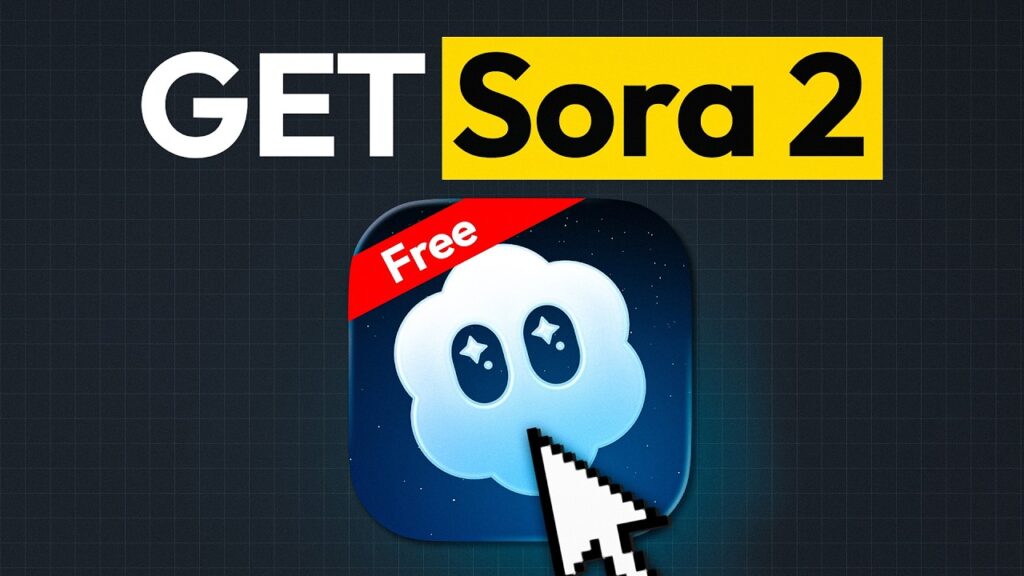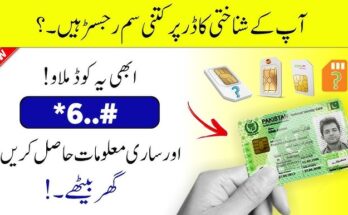Sora 2 by OpenAI
As a Pakistani content-creator working in the UK, you’re always thinking about new tools to elevate your storytelling in Urdu on platforms like TikTok and Instagram. One tool worth examining is Sora 2, the latest video-and-audio generation model from OpenAI. Below you’ll find a deep dive into what Sora 2 is, how it works, its strengths & limitations, what it means for creators, and some practical tips and caveats (especially from the perspective of a creator like yourself).
What is Sora 2?
Sora 2 is a next-generation AI system from OpenAI designed to generate short videos with synchronized audio from text prompts (and/or images).
Key points:
It builds on OpenAI’s earlier model Sora (released in 2024) and is described as the “GPT-3.5 moment” for video generation.
Sora 2 supports video + audio, meaning that unlike many earlier systems which generated silent clips, this one includes synchronized sound, dialogue / effects, etc.
The model emphasizes better physical realism, meaning objects behave with plausible physics (bounce, trajectory etc) rather than “magically” correcting themselves.
There’s an app (“Sora app”) where creators can prompt generation, remix videos, insert characters/cameos etc.
In short, Sora 2 aims to let users turn a text description (e.g., “a guy does a backflip on a paddleboard with ocean spray around”) into a short, realistic video clip that also has sound and coherent motion.

Why it matters — especially for creators
For a content creator making Urdu-language TikToks and short clips, Sora 2 opens new creative possibilities:
Storyboarding becomes easier: Instead of filming “on location”, you can generate a rough video scene and then overlay voice-over, subtitles, your own footage etc.
Visual variety: You could generate stylised visuals, surreal scenes, or mixes of real & virtual that would be costly/hard to film.
Sound + visuals in sync: Because Sora 2 supports audio, you can generate scenes with ambient sound or character dialogue, making the output richer.
Experimentation & remix culture: The app format encourages remixing, inserting yourself or your friends, generating short viral-type clips.
Given your audience, you might use Sora 2 for:
Short dramatic intros / transitions (e.g., stylised scene of “beginning of day in Lahore” with cinematic sweep)
Visual metaphors in Urdu: e.g., “when the idea hit him like a lightning bolt in the desert” → generate something illustrative
Social media teasers: produce eye-catching visuals to drive traffic to your main content
How Sora 2 works (at a high level)
While OpenAI has not disclosed every detail, the public “system card” and documentation give a good picture.
The model uses a text prompt (and optionally an uploaded image) as input.
It then generates a video — in latent space and then decodes to frames — applying motion modelling with improved physical consistency. For example: if a basketball player misses a shot, the ball rebounds rather than teleporting.
Audio (dialogue, sound effects, ambient) is generated and synced to the visuals.
The model is rolled out via an invite-only app (initially) with usage limits.
There are built-in guardrails for safety, moderation of content, etc.
Strengths & innovations
Sora 2 brings several important improvements compared to earlier video-generation systems:
Improved realism and physics: As mentioned, it handles interactions with objects more accurately.
Audio-visual integration: The addition of sound is a major step.
Controllability: Users have finer control over prompts, styles, durations, and elements in the scene.
Application form-factor: The Sora app allows you to upload yourself (a “cameo” function) or insert friends, pets etc. While not unique to Sora 2, the integration is improved.
Limitations and things to watch
Even with its leaps forward, Sora 2 is not a perfect tool and there are several limitations, important especially for creators who rely on precision and professionalism.
Duration and scale: The generated videos are relatively short and more suited to short-form clips than full-length productions.
Errors in realism: While physics are better, mistakes still occur: motion may be slightly off, lighting inconsistent, or objects may flicker. That means you’ll often need some post-editing.
Cost / eligibility: The full “Pro” version or high-quality generation may be behind paywalls or invite-only.
Copyright / IP risks: This is a big one: because the model is trained on large datasets of images & videos (including copyrighted works) and because the generated output can mimic styles or characters, there are legal and ethical concerns.
Authenticity / trust: As more creators use such tools, audiences may question what is real vs generated. If your brand depends on authenticity (which for many Urdu-language creators does), you need to decide how to position your usage.
Bias / cultural limitations: Some reports suggest the model may reflect biases in the data (e.g., representations of cultures, characters). As a Pakistani creator you might need to check how well it handles local cultural context, Urdu scripting etc.
Implications for you as a creator
Here are specific implications and potential uses for you, along with strategies & cautions.
Use cases
Quick ideation and pre-visualisation: Instead of filming every location, use Sora 2 to mock-up a scene (e.g., “a man riding a motorbike through Lahore at dawn with rickshaws around”) then layer actual footage or voice-over.
Stylised intros/outros: Generate short cinematic sequences (5-10 seconds) to open or close your TikTok videos, giving them a premium look.
Visual metaphors: Use the model to visualise metaphors that are hard to film: e.g., “ideas exploding like fireworks over Karachi skyline” or “time moving backwards in an old Lahore market”—something that grabs attention.
Collaborations & social features: The Sora app’s “cameo” features could let you insert yourself or a friend/pet into generated scenes and share them, increasing engagement.
Experimentation for content types: You might explore new formats: short AI-generated sequences mixed with live-action or voice-over, creating a hybrid style unique to you.
Strategies
Start small: Try a 10-second clip, evaluate quality before committing to a bigger piece.
Combine AI-and-live footage: Use Sora 2 to generate the “wow” part, then film real or scripted transitions to ground the piece in your style and authenticity.
Incorporate Urdu voice-over/subtitles: Since your audience is Urdu-speaking, generate the visual in Sora 2, then add Urdu narration and subtitles for clear localization.
Use generative visuals as hooks: Your first 2–3 seconds on TikTok are vital. Use AI-generated visuals that stop users from scrolling.
Be transparent: If you use generated clips, consider mentioning them or making clear they’re AI-enhanced. That can build trust and avoid audience backlash for “misleading” visuals.
Cautions & ethical/legal issues
Don’t infringe copyright: Avoid prompts that clearly mimic existing characters, trademarked properties or pop culture icons (unless you have rights) — many creators are facing pushback.
Respect likeness rights: If you insert yourself or friends, ensure consent; if the model allows “cameos” referencing people who haven’t agreed, that can pose ethical issues.
Manage audience expectations: Using hyper-real visuals sets a high bar; ensure your storytelling still connects emotionally and not just via spectacle.
Localisation & cultural nuance: If you’re referencing Pakistani or Urdu-cultural contexts, check whether the model handles them well; you may need to customise or post-edit heavily.
Cost/plan: Keep track of how many generations you need and whether you’re in a free/invite tier vs paid version.
Challenges ahead & what to monitor
As you evaluate whether to adopt Sora 2 into your toolkit, here are some broader considerations and future directions worth keeping an eye on:
Longer duration / episodic generation: Right now many AI video tools generate short clips (10-30 seconds). If you move into longer form (e.g., 1–2 minutes), how will Sora scale?
Better language/cultural support: As an Urdu-language creator, you’ll want tools that support Urdu voice-over, script generation, cultural fidelity. It’s early days—there may be limitations.
Integration with existing platforms: Will Sora 2 integrate with other workflows (video editors, mobile devices, TikTok export specs)? You’ll want smooth pipelines.
Regulatory/legal environment: As we saw with the Japanese government requesting OpenAI to halt use of certain content. Laws around deepfakes, AI content, copyrights are evolving.
Competition and uniqueness: Other players in AI video generation will emerge. To stand out, your creative voice—Urdu language, Pakistani context—will matter more than just the tool.
Audience perception: As AI generated content becomes more common, audiences may grow fatigued or sceptical. The authenticity of your message, how you incorporate the tool, and how you differentiate will matter.
Practical steps to try Sora 2
Here’s how you might start integrating Sora 2 into your workflow:
- Request access / check availability
Download the Sora app (iOS initially) and look out for invite access.
Understand the usage limits, cost tiers (free vs Pro) and what features you’re eligible for.
- Prompt design
Write concise prompts describing what you want (scene, action, style, sound). Example: “A young Urdu-speaking poet stands in an old Lahore street at sunset, reciting verses as lanterns glow, with gentle ambient rickshaw sound in the background.”
Experiment with styles (cinematic, animated, photorealistic) and durations.
- Generate clip + review
Generate a test clip (e.g., 10-15 seconds).
Check for: motion realism, audio clarity, sync, visual artefacts, cultural relevance (does the scene feel like Lahore, or generic?).
- Edit/augment
Import the generated clip into your usual editing software (mobile or desktop).
Add Urdu voice-over / subtitles, your own transitions, branding, call-to-action.
Possibly overlay live-action footage for hybrid effect.
- Publish & analyse
Use the clip as part of a TikTok or Instagram post.
Monitor how your audience engages (watch time, comments, shares).
Iterate: perhaps use the tool for intros/outros, or background visuals for your voice-over content.
- Keep ethics/rights in mind
Avoid prompts that try to mimic copyrighted characters or well-known celebrities.
When using “cameos”, make sure consent is clear.
Consider adding a note (“Generated with Sora 2”) if you want transparency with your audience.
Final thoughts
Sora 2 is an impressive technological advance in AI video & audio generation. For a creator like you, it offers fresh ways to visualise ideas, attract attention, and experiment with new formats. But like any tool, its value comes not simply from the technology but how you integrate it into your creative voice, workflow and audience context.
Because you create Urdu-language content from the UK for a Pakistani context, you have a unique vantage: you can blend global-class visuals (via AI) with local storytelling, language and cultural authenticity—something many creators won’t. That gives you potential to stand out.
My recommendation: try Sora 2 in a small side-project (for example: an experimental intro or special piece), evaluate how seamlessly it fits your style, how your audience reacts, and what the cost/benefit is. If it works well, you could make it a recurring part of your toolkit (e.g., special series, stylised segments). If it doesn’t quite feel right, at least you’ve explored a cutting-edge tool and know where the boundaries currently lie.



